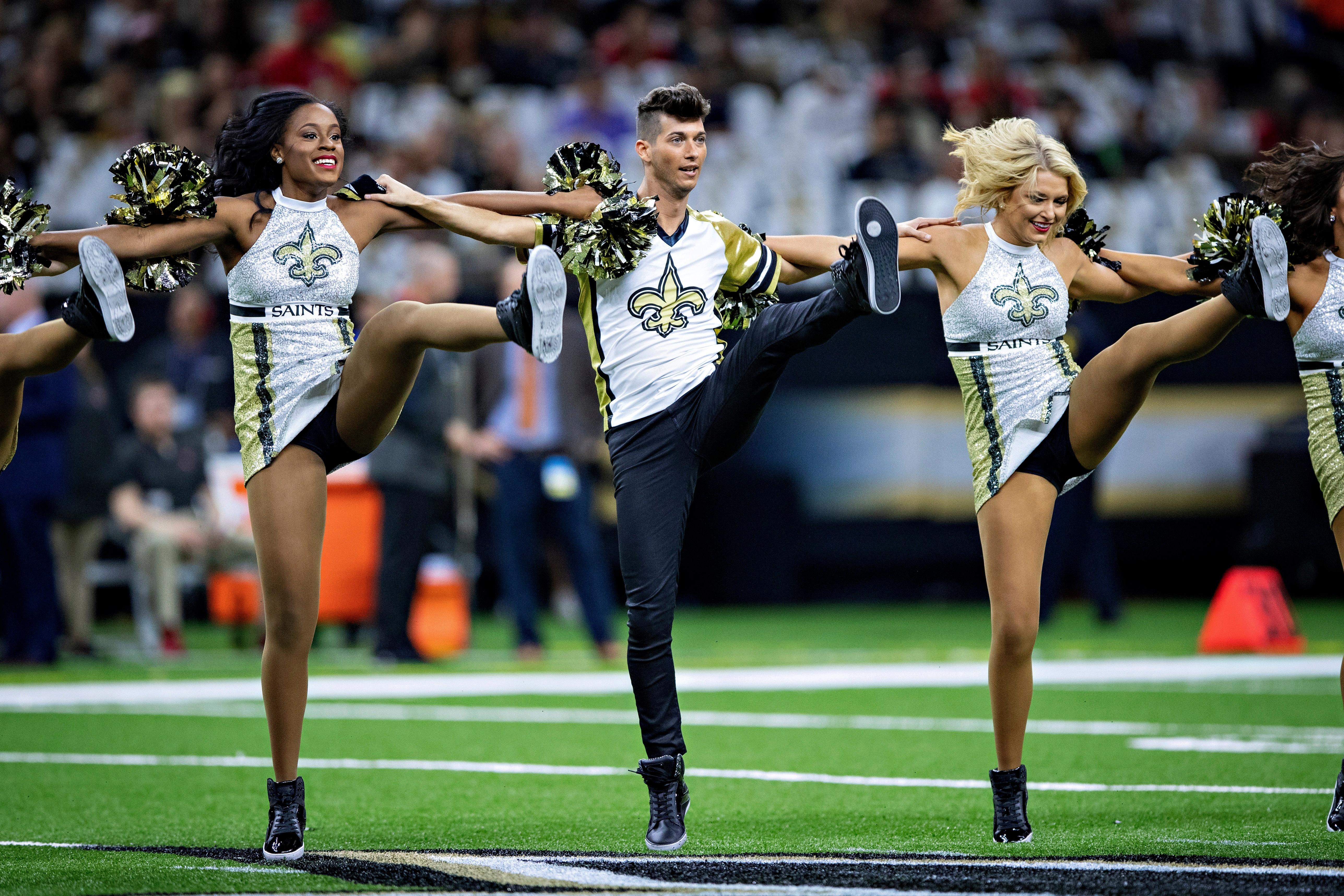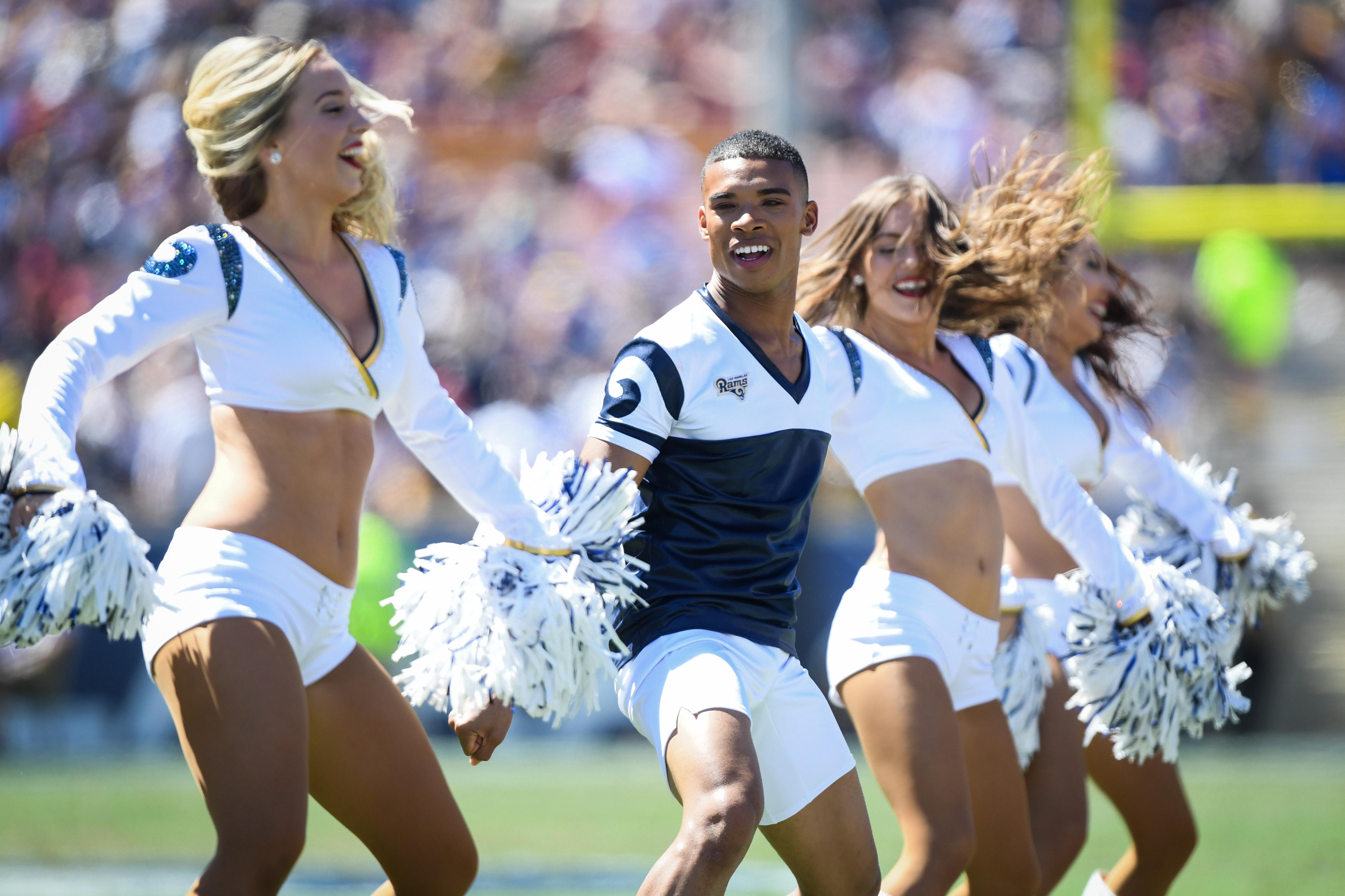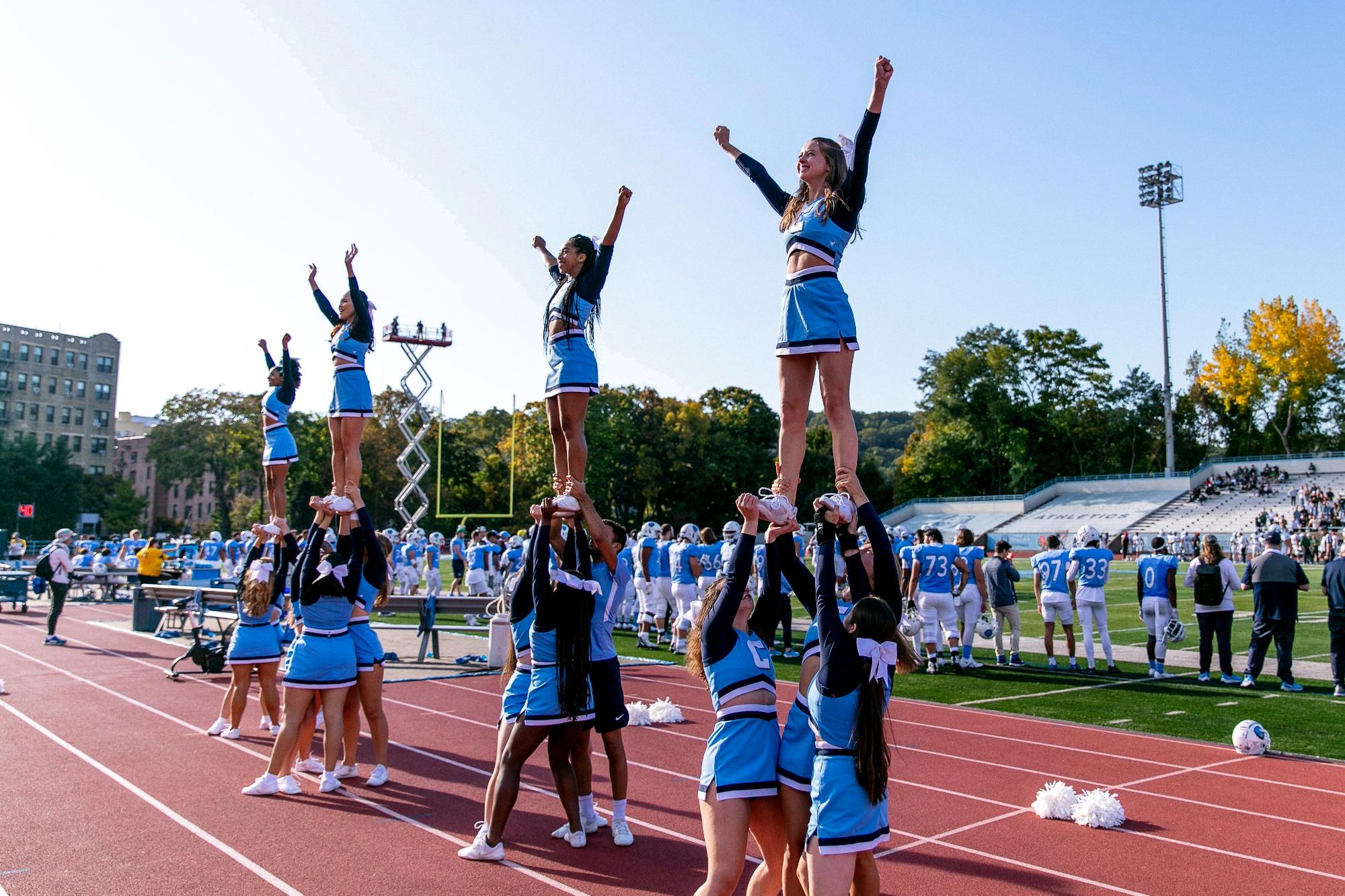Cheerleading is a sport that requires incredible athleticism, and the team dynamic of a cheer squad relies heavily on each member’s ability to competently perform their assigned roles. In order to create a successful routine, it is essential that each and every cheerleader knows the three main positions of cheerleading – base, back spot and flyer.
Let’s start with the bases. These are the bottom two people in a stunt who are responsible for lifting and catching the flyer. To be a successful base, you need to have strength, coordination and good communication skills. It is also important for bases to have confidence in their own abilities as well as trust in their teammates so they can effectively work together.
The back spot is another essential role in cheerleading. They stand behind the stunt group and povide stability while also ensuring safety during lifts and stunts. Back spots are often responsible for timing cues and spotting the flyer when they come down from their stunts. To be an effective back spot, you need to possess excellent balance and agility, as well as strong communication skills so you can effectively communicate with your teammates during routines.
Finally, we come to the flyers – arguably the most important role on any cheer team! Flyers are responsible for executing complex stunts mid-air while also relying on their bases and back spot for stability as they flip or twist through their stunts. Flyers require great physical dexterity and agility along with trust in their teammates if they want to perform at a high level.
Overall, these three positions form the foundation of any successful cheer team – each role requiring its own particular set of skills that all combine together to create an amazing routine! No matter which position you take on within your team, it’s important to always remember that teamwork makes all things possible!
Positions of a Cheerleader
Cheerleading is a sport that requires the coordination and cooperation of a group of people. The main positions of cheerleading are the base, back spot, and flyer.
The base is the bottom person in a stunt and is responsible for anchoring the stunt and providing support to the flyer. They must be strong enough to lift and hold up their flyer while keeping them steady in the air. Bases also help with transitions between stunts.
The back spot stands behind the flyer to ensure the safety of their partner during stunts. They act as an extra set of hands, helping to balance and position the flyer before they are lifted into the air. The back spot also helps with spotting any tricks or movements that require additional security in mid-air.
Lastly, the flyer is responsible for executing all tricks and movements in a routine. Flyers are typically smaller than other members on a squad whch makes them lighter to lift and more agile when executing tricks in mid-air. Flyers must have strength, flexibility, coordination, and stability when performing complex tricks or stunts such as tumbling passes or liberty stunts.
Overall, cheerleading requires skillful coordination among all team members to execute complicated routines safely and effectively. By working together on these three main positions within a routine, cheerleaders can create stunning performances that showcase their athleticism, talent, and spirit!

Source: gq.com
Positions in Cheerleading
The three positions in cheerleading are base, flyer, and spotter. The base is responsible for providing the support and stability to the flyer, who is typically the person lifted in stunts. The spotter is responsible for providing an extra layer of safety by assisting the bases and flyers during stunt formations. Bases must have strong arms and legs to keep their balance while lifting or spotting a flyer. Flyers must be fearless as they are performing while being lifted several feet off the ground. Spotters need to have good communication skills and great coordination with the rest of the squad to ensure everyone’s safety. All three positions require trust between cheerleaders as they each rely on each oher to execute stunts safely and successfully.
The Importance of the Most Important Position in Cheerleading
The most important position in cheerleading is the spotter or scoop. This person is responsible for ensuring the safety of the flyer by proiding a base of support for them during stunts. The spotter should be knowledgeable in spotting techniques, and must remain alert to ensure that the stunt is performed safely and correctly. They should be able to recognize any instability in a stunt and know when it is necessary to catch the flyer before they hit the ground. Spotters must also be strong enough to lift and hold flyers during stunts while still providing a safe landing zone. With all these responsibilities, it’s clear that the spotter plays an integral role in cheerleading stunts, making it the most important position on a team.
The Role of Top Girl in Cheerleading
Top girl in cheerleading is the person who performs the stunts that require the most athleticism and trust. The flyer, or top girl, is lifted into the air by their base or bases and held securely while they twist and flip mid-air, relying on their spotters to catch them safely as they come back down. The flyer is typically one of the most experienced cheerleaders and an important part of any squad, as they are often seen as a symbol of strength and showmanship.
The Most Difficult Cheerleading Move
The hardest move in cheerleading is usually considered to be the round-off back handspring. It requires the cheerleader to perform a round-off, which is a 180-degree turn, and then land in a handstand position before springing backwards into a back handspring. This requires exceptional balance, focus, strength and flexibility. The round-off back handspring can be made easier with drills such as handstands and cartwheels to improve technique and coordination. Additionally, using a spotter or foam flooring can help make the move less intimidating.

Source: npr.org
Types of Stunts
There are four main types of stunts performed in cheerleading: Climbing Stunts, Weight Transfer Stunts, Timing Stunts, and Extension Stunts.
Climbing stunts involve one or more flyers lifting off the ground and being held up by bases and/or back spots. The flyer may be lifted from the ground to a higher level such as a shoulder stand, liberty, or extended cradle.
Weight transfer stunts involve the bases and/or backspots shifting the flyer’s weight from one base to another. This type of stunt can include transitions like a heel stretch, scorpion, or double down.
Timing stunts require precise timing between the flyer, bases, and/or back spots. This type of stunt often involves a combination of lifts and throws with little to no pause in between them. Examples include basket tosses, 360’s, or air-bosses.
Extension stunts involve extending a body part (typically an arm) into an elevated position whle also maintaining control of the stunt by keeping it tight throughout the entire skill. Examples include extensions, liberty holds with extended arms, and high V’s.
Level 5 Cheerleading: An Overview
A Level 5 cheerleader is a highly skilled athlete who has mastered the fundamentals of stunting and tumbling. They possess the ability to perform more advanced skills such as extended two-legged stunts with 1 ½ twist, extended one-legged stunts with 1 twist, and double twist dismounts from extended one-legged stunts. Level 5 cheerleaders are also expected to demonstrate a high level of proficiency in body control, strength, flexibility, and technique while performing all of these skills.
Can I Be A Cheerleader Without Flexibility?
Yes, you can still be a cheerleader even if you are not particularly flexible. However, being flexible is an important asset to have as a cheerleader, as it gives you the ability to perform the stunts and dance moves with ease. It also helps with balance and grace when performing in front of an audience. That being said, there are oher skills that are necessary for cheerleading such as strength, agility, coordination, and performance ability. If you focus on developing these skills while also working on your flexibility through stretching exercises on a daily basis then you can still become a great cheerleader.
The Easiest Stunt in Cheerleading
The easiest stunt in cheer is a thigh stand. This stunt requires two bases to kneel on one leg or be in a lunge position with their front knees bent, which allows the flyer to stand on their thighs. This basic stunt is typically used for younger athletes and those at the lowest level. It helps flyers build confidence and strength befre progressing onto more complicated stunts. To ensure safety, always make sure that the bases are properly positioned and provide adequate support to the flyer. Additionally, all participants should wear appropriate protective gear, such as helmets and mats, while performing stunts.

Source: cnn.com
Which Leg Do Cheerleaders Fly On?
When flying during cheerleading, the leg you fly on will depend on your position in the pyramid or stunt. Generally, flyers use their right leg to fly as they will be more comfortable and balanced. However, if you are standing on the left side of the pyramid or stunt, you may be asked to fly with your left leg. To be prepared for any situation, practice your flying skills on both legs so that you can confidently perform stunts regardless of the side of the pyramid you are on.
Skill Levels of Cheerleading
Level 1: Cheer teams at this level are typically just beginning to learn fundamental stunting and tumbling skills. Participants must be able to safely execute cartwheels, round-offs, forward and backward rolls, front and backwalkovers, knee or waist level single leg stunts, two-footed preps, and straight cradles.
Level 2: Teams at this level have mastered the fundamentals of stunting and tumbling. They are able to safely execute a backhandspring, front handspring, connect Level 1 tumbling with a handspring, prep level single leg stunts, extended two-footed stunts, half-twisting stunts from prep level as well as basic stunt technique.
Level 3: At this level teams have become proficient in all the Level 1 and 2 skills. In addition they are able to perform more difficult skills such as standing backtucks and layouts from a stunt stand or full twisting stunts from an extended position. They also must exhibit excellent technique in all of teir skills.
Level 4: This is the highest cheerleading skill level. Teams that reach this level demonstrate mastery of all lower levels including advanced stunting and tumbling skills such as double twisting stunts from an extended position or full twisting layouts from a stunt stand. Teams must also exhibit excellent technique in all of their skills.
Head Cheerleader Role
The head cheerleader is typically referred to as the captain of the cheerleading team. This individual is responsible for leading the team, setting a positive example, and ensuring that everyone is on the same page. The captain often helps the coach with scheduling practices and competitions, choreographing routines, organizing fundraisers, and resolving any interpersonal issues that may arise among team members. As such, they are a critical part of any cheerleading squad and should be respected by their teammates.
What Is an Ideal Weight for a Flyer?
The best weight for a flyer typically depends on the intended use and environment. For general purpose flyers, 8.8pt is a great choice; it’s thick enough to be noticed and stand out, but light enough so that it won’t be too heavy. For flyers that are meant to be durable and long-lasting, 5.8pt or 7.6pt nevertear paper is ideal as these weights are thicker than standard paper and cannot be torn easily.

Source: gocolumbialions.com
Ideal Weight for Cheerleaders
The ideal weight for a cheerleader will vary depending on their body frame and height. Generally, cheerleaders shuld strive for a healthy weight range that is appropriate for their size. A good rule of thumb is to aim for a Body Mass Index (BMI) between 18.5 and 24.9. This BMI range reflects the lower end of a healthy weight for someone of average height (4’11-5’3). If your height falls outside this range, you should adjust your ideal BMI accordingly. For example, if you are 5’4” tall, you should aim for a BMI between 20-25. Additionally, it is important to remember that being underweight can be just as unhealthy as being overweight, so no matter what size or shape you are, it is essential to maintain a balanced diet and get regular exercise in order to stay healthy.
The Reason for Short Cheerleading Skirts
Cheerleading skirts are typically short for improved mobility and flexibility. The shorter length allows for more dynamic stunts and tumbling, as well as allowing for greater range of motion when cheering on the sidelines. Additionally, the shorter length is more modern and visually appealing to spectators. Shorter cheerleading skirts also help to accentuate the athleticism of the sport; they are designed to be practical and stylish at the same time.
Conclusion
In conclusion, cheerleading requires a great deal of trust and coordination between the three main positions: base, back spot, and flyer. Each of these roles is neessary to ensure that stunts are performed safely and successfully. The base provides the stability for the stunt, the back spot ensures that the flyer does not fall too far backwards, and the flyer performs an impressive mid-air twist or flip. Spotters or ‘third bases’ also play an important role in making sure the stunt is executed with safety in mind. Ultimately, each cheerleader is responsible for trusting their teammates to perform their respective roles correctly in order to create a successful and safe routine.
